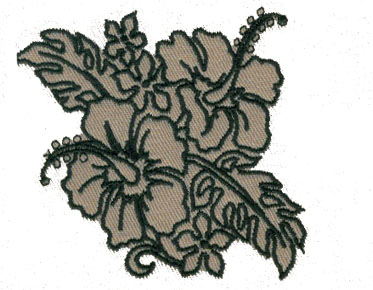8 Steps to Digitize Your Logo for Embroidery
If you’re a business owner, then you might have considered printing your logo or embroidering it on items to promote your business. However, printed logos can fade and wear away over time. As a result, most companies choose to digitize their logos for embroidery instead. However, embroidery digitizing files or embroidery digitizing photos requires more effort than you may imagine. It is more difficult than you think to scan photographs for use in embroidered logo design! This article will show you how to digitize your logo, especially how to digitize a logo for embroidery.
How
do you digitize your logo?
Here are a few steps you can take to digitize your logo:
Step #1 Place your logo
First, submit your logo or artwork in jpg or png format and design it in your program. You can improve the look of your logo by cutting out excess parts or white space that you don't like. You can also preview the logo while embroidering it using embroidery software. You can create your own artwork and upload it to the machine. When selecting an image to splice, you can choose to zoom, crop, and change the color.
Step #2 Change the size of the embroidery design
Entering exactly what size embroidery logos will appear on the fabric is crucial because the machine will print them exactly as they look. The logo space must be carefully measured and the appropriate measurements must be precisely entered.
To avoid disappointment, the program has a feature that shows you how the logo will appear on the fabric in real life. Once you have determined the correct size, you can see how the logo will appear on the item.
Step #3 Select the stitch type
Manufacturers utilize a variety of stitches to achieve a unique style, texture and appearance. Fabric selection, fabric push-pull resistance and maximum stitch length are all factors to consider. Here is an example of a machine-based embroidery stitch:
Straight
stitches
Fill
stitches
Satin
embroidery
Step #4 Establish the stitching direction
This is necessary because the machine requires instructions for each stitch. Stitch patterns can provide a unique color and character to the fabric in order to best reproduce the logo design. If you ignore this step, your finished product may be subject to multiple jumps by the machine and extremely uneven stitch patterns. The perfect stitch will save you money and time.
Step #5 Thread color
Using thread colors that match the printed logo is critical to prevent the operation from having to be completely redone. If you're not sure which color to use, line standards describe the ideal hue for each situation. You can simplify your task by choosing the right color for your sewing machine, and the design will be flawless.
Step #6 Upload the design to the embroidery machine
After you have copied the fictional file to your system, the following steps are to run it. The embroidery file should be copied to the machine or software. It is uploaded to the system using a USB drive, a data cable, or a CD. If you have the program installed on the same computer, copy it directly from there.
Step #7 Prepare the machine
Before the logo on the fabric can be digitized, the design components must be entered. Before printing on the fabric, you must first define the stitch, thread, orientation, and embroidery order. The embroidery frame can be filled by inserting embroidery material into the robotic arm.
Step #8 Check your digitizing logo
Your machine will digitize the logos on the goods. If you must adjust it, recreate it after making the necessary changes and comparing it to the design. For best results, these phases should be repeated once any revisions have been made. Your embroidery logo is now a digital logo.
How
to digitize your logo for embroidery? Follow these simple steps and you'll be
on your way. The process is simple and takes very little time to complete. Once
you've digitized your logo, you can use it in your embroidery project.



